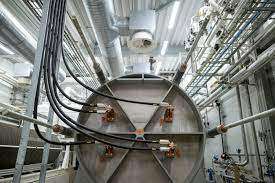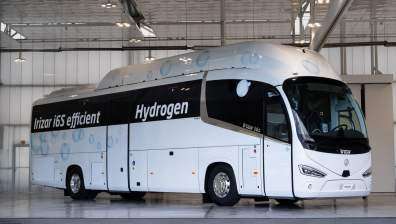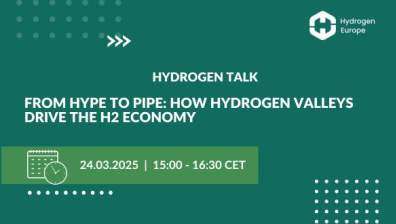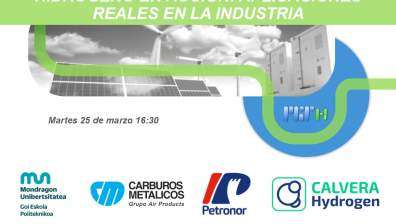
Steelmakers look to hydrogen to power energy-intensive processes.
Recent months have seen a surge in global companies unveiling pilot schemes to demonstrate the potential of hydrogen to transform energy-intensive industrial processes and wean them off coal and other fossil fuels.
Earlier this month, Vattenfall, the Swedish energy group, announced plans to help build the world's first hydrogen-generating unit from the Hollandse Kust West offshore wind farm project in the Netherlands. The aim is to pipe ashore green hydrogen to Rotterdam for use in a range of industrial and petrochemical processes.
The company is already pioneering the use of green hydrogen, whereby renewable energy is used to split water into hydrogen and oxygen, in the production of green steel for the Volvo Group, a car manufacturer.
As part of a consortium also involving Swedish metals manufacturer SSAB and iron ore miner LKAB, Vattenfall has used hydropower from the country's reservoir system to produce hydrogen by electrolysis. This can be used as a chemical reductant to extract oxygen from iron ore and produce high-quality steel. Other steel producers are keen to reduce the use of highly polluting coking coal as an ingredient in smelting ore and switch to greener energy when it becomes available.
ArcelorMittal, Europe's largest steelmaker, has announced investments worth 5.6 billion dollars in plants in Spain, Canada, Belgium and France, in projects aimed at decarbonising steel production. However, the use of hydrogen to decarbonise hard-to-abate industries, such as steel, remains problematic.
Many of these pilot projects rely on a partial, rather than full, switch from natural gas to hydrogen, either the green variety or the grey one, which is produced from fossil fuels. ArcelorMittal says its ambition is to ensure that future investments are "hydrogen-ready" so that, as hydrogen supplies become available, it can switch from natural gas to help meet decarbonisation targets.
Last month, consortia in which Vattenfall is involved announced plans to use power generated at wind farm. The company is also looking into ways to use green hydrogen to help process the "biogenic carbon dioxide" waste produced by Scandinavia's pulp and paper sector.
Hydrogen has a role to play in a number of manufacturing sectors "where high temperatures are required and it is difficult to apply to electricity directly," Nordlander says.
One of the technological limitations is a bottleneck in the supply of equipment used in splitting water into hydrogen and oxygen to create the green fuel reserve. "There is not enough capacity to produce electrolysers."
Steelmakers look into hydrogen to power energy-intensive processes | Financial Times (ft.com)




